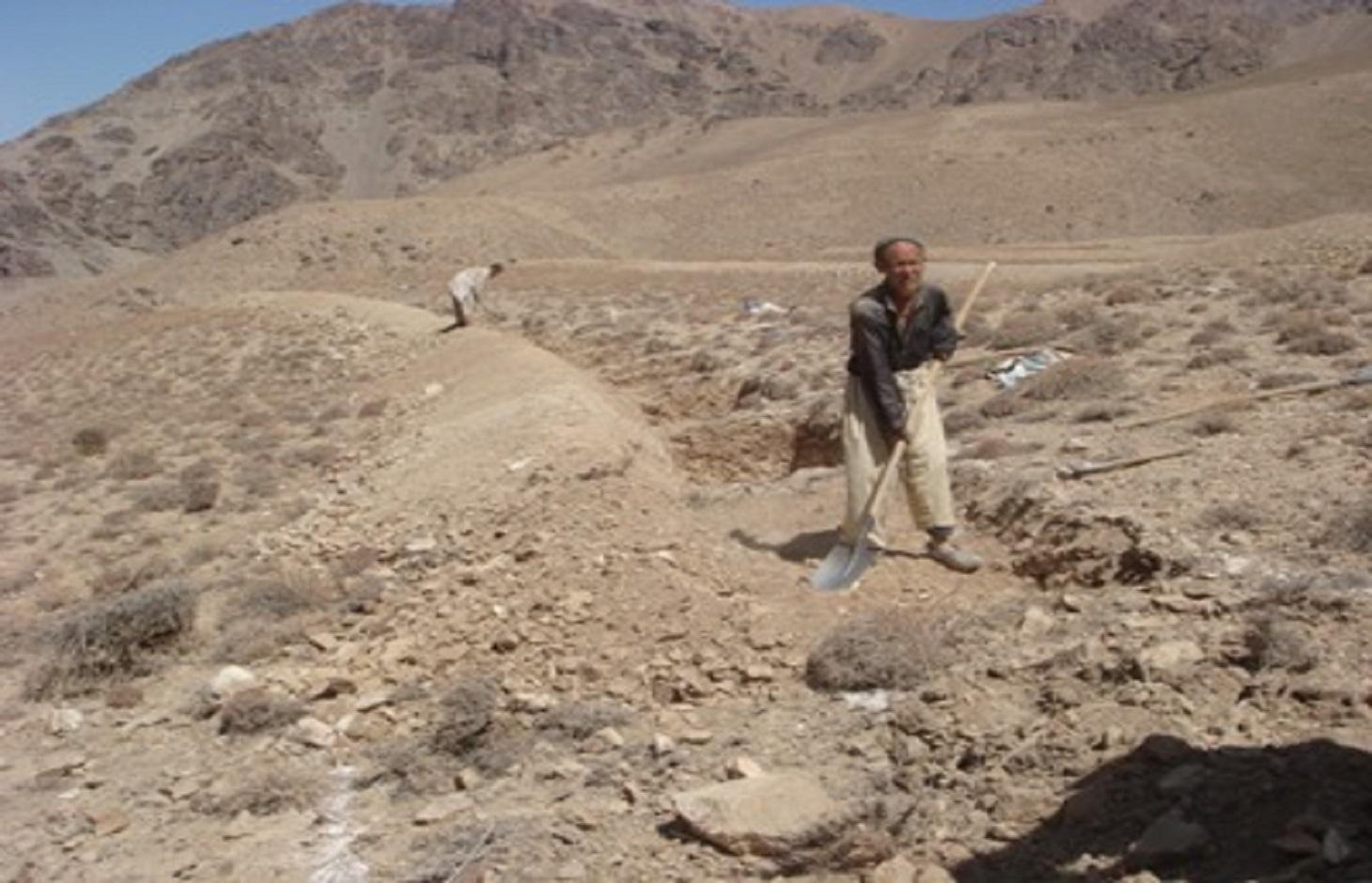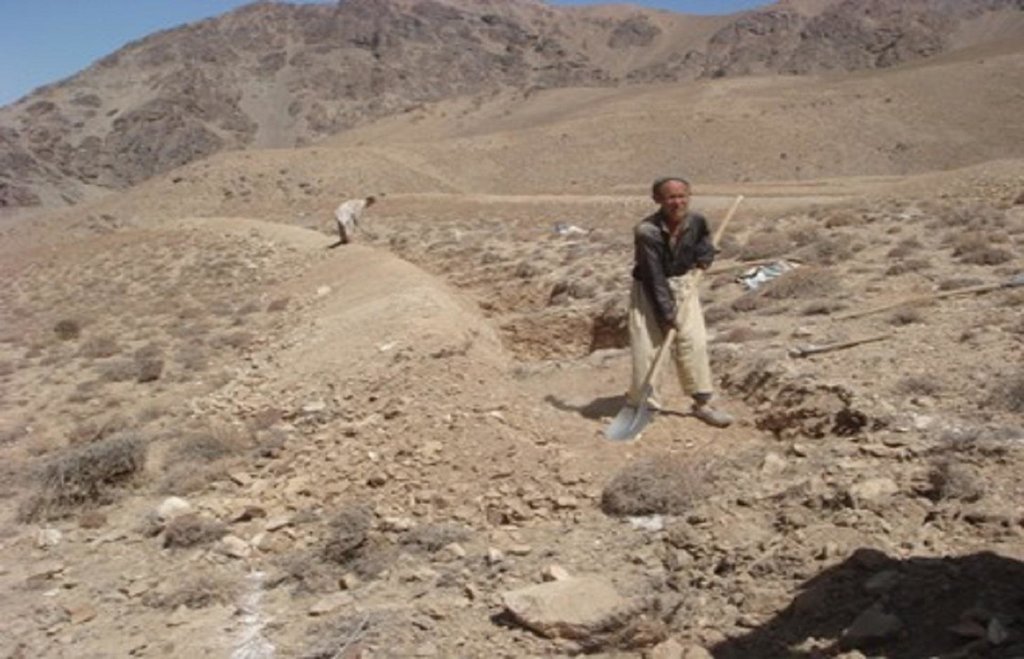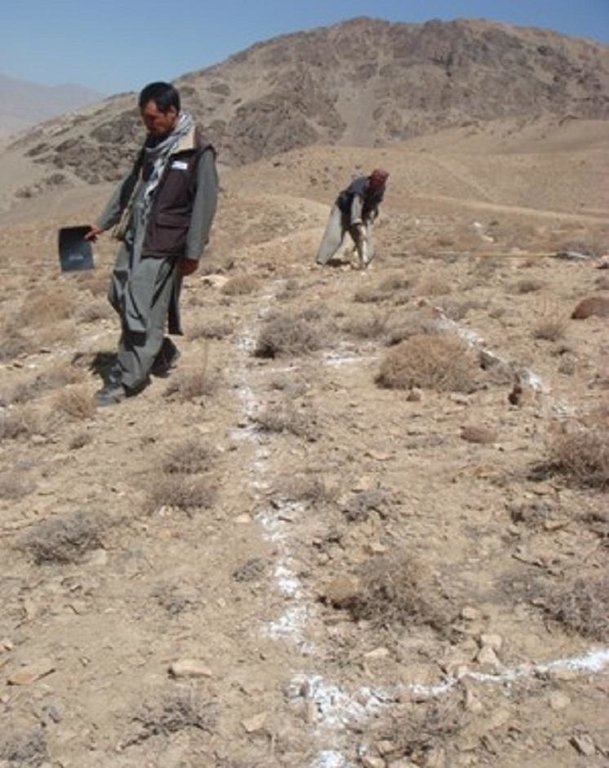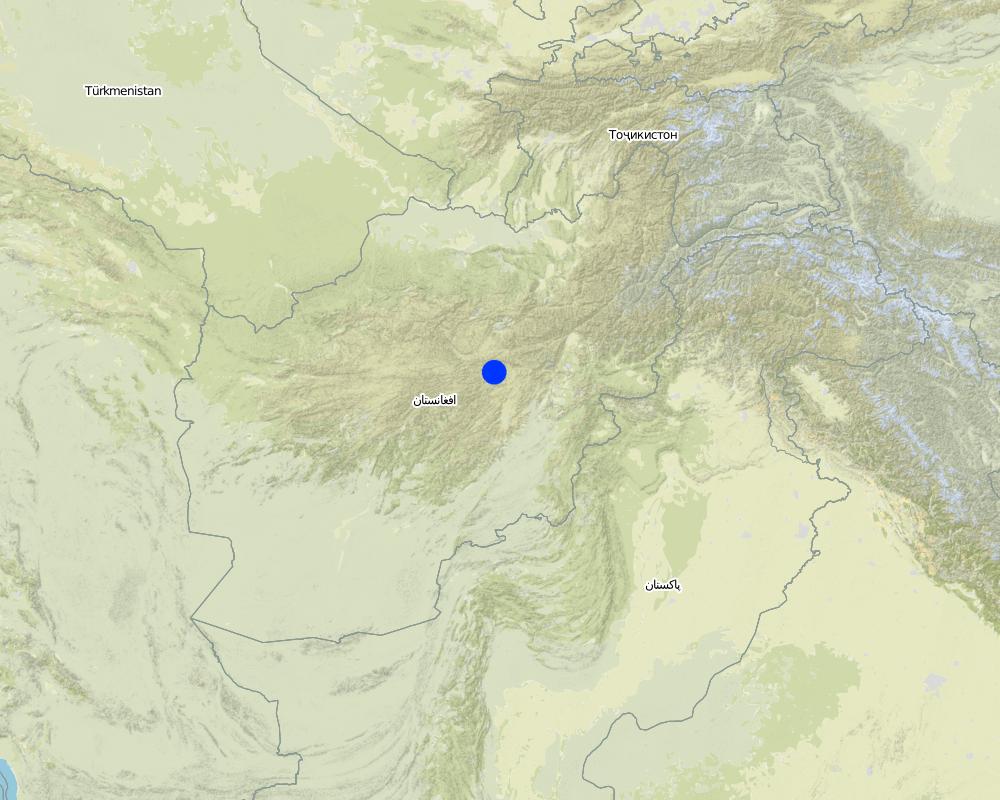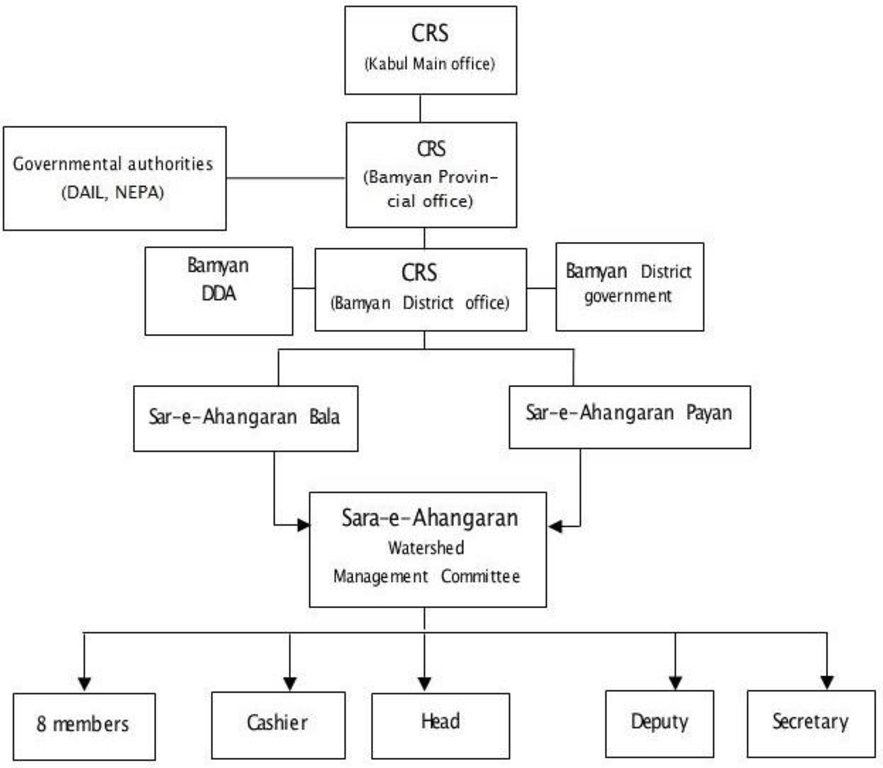Community-Based Watershed Management [Афганистан]
- Шинийг нээх:
- Шинэчлэх:
- Эмхэтгэгч: Aqila Haidery
- Хянан тохиолдуулагч: –
- Хянагч: Deborah Niggli
Mudiriat Aabreza Tawasut Mardum (Dari)
approaches_2612 - Афганистан
Бүлгүүдийг үзэх
Бүгдийг дэлгэх Бүгдийг хаах1. Ерөнхий мэдээлэл
1.2 Арга барилыг баримтжуулах болон үнэлгээ хийхэд оролцсон хүн эсвэл байгууллагын холбоо барих хаяг
ГТМ мэргэжилтэн :
ГТМ мэргэжилтэн :
ГТМ мэргэжилтэн :
Montzieux Mathilde
Афганистан
ГТМ мэргэжилтэн :
Hazem Zainullah
Афганистан
ГТМ мэргэжилтэн :
Alemi Saadat
Афганистан
ГТМ мэргэжилтэн :
Ershad Mustafa
Афганистан
ГТМ мэргэжилтэн :
Ahmadi Reza
Афганистан
Арга барилыг баримтжуулах/үнэлэх ажилд дэмжлэг үзүүлсэн байгууллага(ууд)-ын нэр (шаардлагатай бол)
HELVETAS (Swiss Intercooperation)1.3 WOCAT-аар баримтжуулсан өгөгдлийг ашиглахтай холбоотой нөхцөл
Мэдээллийг хэзээ (газар дээр нь) цуглуулсан бэ?
10/11/2011
Эмхэтгэгч болон гол мэдээлэгч хүн(хүмүүс) WOCAT аргачлалаар баримтжуулсан мэдээллийг ашиглахтай холбоотой нөхцлийг хүлээн зөвшөөрсөн:
Тийм
1.4 ГТМ-ийн технологийн асуулгын(д) суурь мэдээлэл(д)
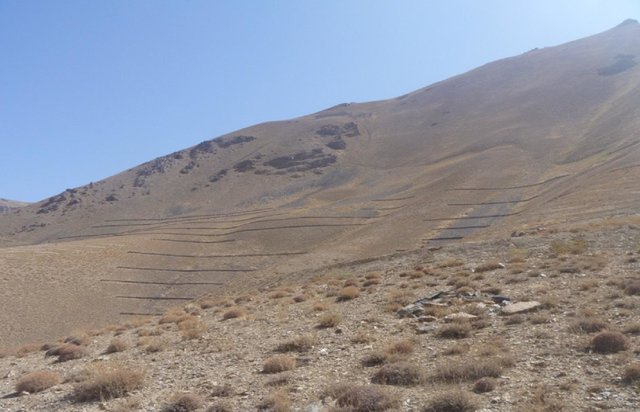
Stone wall [Афганистан]
Contour stone walls constructed on moderate to steep slopes to retain water and sediments and trap snow.
- Эмхэтгэгч: Aqila Haidery
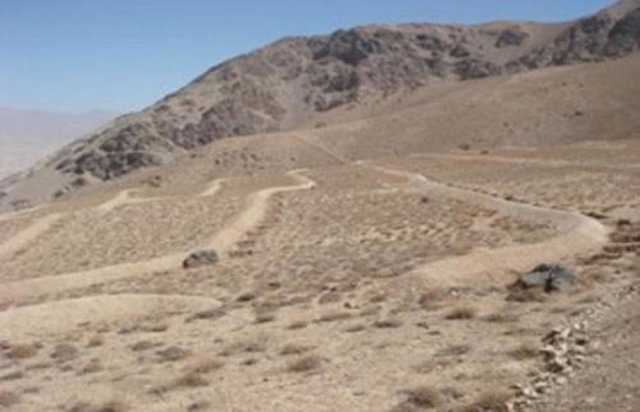
Contour Trench Bund [Афганистан]
Contour trench bund applied on contour lines of moderate slope to trap run-off to improve infiltration and reduce flash floods.
- Эмхэтгэгч: Aqila Haidery
2. ГТМ Арга барилын тодорхойлолт
2.1 Арга барилын товч тодорхойлолт
Sustainable implementation of watershed management through appropriate SLM technologies, formation of organizational structures and capacity building of stakeholders
2.2 Арга барилын дэлгэрэнгүй тодорхойлолт
Арга барилын дэлгэрэнгүй тодорхойлолт :
The overall objective of the community-based watershed management project implemented at Sar-e-Ahangaran was to reduce water induced disaster risks and improve people’s livelihoods. The project was implemented by Catholic Relief Services (CRS) with people’s support and funding assistance from USAID.
About 67 hectares of degraded land has been rehabilitated since 2009 through various soil and water conservation measures like stone walls, contour trenches and plantation of fodder species such as alfalfa. The local communities are also protecting the treated areas from grazing and shrub cutting.
With facilitation from CRS, a 15-member watershed management committee was appointed by the participating families. This was important for organizing watershed related works and for the sustainability of project interventions. Some rules for managing the selected watershed were also formulated in a participatory way. For instance, if anyone is found grazing animals at the site, he has to give one sheep to the watershed committee as a fine.
CRS has provided training and technical support to the watershed committee members and workers for project implementation and monitoring. The daily workers were selected from the local communities by the watershed committee and paid in cash as per national norms for their labor. CRS also organized awareness raising workshops regarding environmental conservation and water-shed management and the entire community including teachers and students participated in these village events.
As a result of Sar-e-Ahangaran watershed management project, the people have a more positive attitude towards natural resource management. The formation and capacity building of the watershed management committee is a step towards ensuring long-term sustainability of the project outputs and community owner-ship. The watershed committee is not yet registered with the government but for future sustainability, this will be an important activity. The Islamic Republic of Afghanistan is in the process of formulating a comprehensive community-based natural resource management strategy. Once in place, the Sar-e-Ahangaran community can take advantage of that strategy if the watershed committee is formally registered with the Ministry of Agriculture, Irrigation and Livestock (Bamyan).
The Community-Based Watershed Management approach is documented by Sustainable Land Management Project /HELVETAS Swiss Intercooperation which is funded by Swiss Agency for Development and Cooperation with close support and cooperation of the Catholic Relief Service (CRS).
2.3 Арга барилын зурагууд
2.5 Арга барил нэвтрүүлсэн улс орон / бүс нутаг / байршил
Улс:
Афганистан
Улс/аймаг/сум:
Bamyan
Байршлын дэлгэрэнгүй тодорхойлолт:
Sar-e-Ahangaran, Bamyan center
Map
×2.6 Арга барилыг эхлэх, дуусах огноо
Эхлэх жилийг тэмдэглэ:
2009
2.7 Арга барилын төрөл
- төсөл / хөтөлбөр дээр үндэслэсэн
2.8 Арга барилын үндсэн зорилго, зорилтууд
The Approach focused mainly on SLM with other activities (Disaster Risk Reduction, Rural Livelihoods Improvement)
The overall objective of the project was to reduce watershed induced disaster risks and improve rural livelihoods through SLM technologies and community based sustainable approaches
The SLM Approach addressed the following problems: Lack of people’s knowledge regarding sustainable management of natural resources and disaster risk reduction, lack of knowledge, technical and organisational capacities on sustainable land management technologies for degraded lands
2.9 Арга барилын хүрээнд хэрэгжсэн Технологи/Технологиудад дэмжсэн эсвэл саад учруулсан нөхцлүүд
нийгэм / соёл / шашны хэм хэмжээ, үнэт зүйлс
- Хазаарлалт
People did not have a good idea about how to conserve the environment and at the same time reduce disaster risks and improve their livelihoods
Treatment through the SLM Approach: Training and education via sharing knowledge with watershed committees in Waras forming maintenance committees who should look after restrictions about grazing. Practical demonstration of potential SLM technologies
санхүүгийн нөөц, үйлчилгээний хүртээмж / боломж
- Хазаарлалт
People do not have financial capacities
Treatment through the SLM Approach: Project had a Cash for Work but learning approach
Хууль, эрхзүйн хүрээ (газар эзэмшил, газар, ус ашиглах эрх)
- Хазаарлалт
As the land is formally owned by the government, people did not invest much in sustainable practices. During project initiation, people were also sceptical and rejected the project idea as they thought that by digging trenches, the project was trying to search for gold
Treatment through the SLM Approach: Through several discussions and clarifications and by assurances from the government, people were convinced that the project had no hidden motives and gradually their trust in CRS increased
ГТМ-ийн талаарх мэдлэг, техникийн дэмжлэг авах боломж
- Хазаарлалт
Lack of knowledge about SLM measures
Treatment through the SLM Approach: Training and technical support from CRS
3. Оролцогч талуудын оролцоо ба үүргүүд
3.1 Арга барилд оролцогч талууд болон тэдгээрийн үүргүүд
- Орон нутгийн газар ашиглагч / орон нутгийн иргэд
- олон нийтэд түшиглэсэн байгууллагууд
3.2 Арга барилын янз бүрийн үе шатанд орон нутгийн газар ашиглагчид / бүлэглэлүүдийг татан оролцуулах
| Орон нутгийн газар ашиглагч / орон нутгийн иргэдийн оролцоо | Хэн оролцсоныг тодорхойлж, үйл ажиллагааг тайлбарлана уу | |
|---|---|---|
| санаачлага/идэвхжүүлэлт | интерактив | CRS discussed land use problems and formulated the project. Project site was selected by the participating families and respective CDCs |
| Төлөвлөгөө | интерактив | CDC and watershed members were involved in the planning but not the whole community |
| Хэрэгжилт | Гадаад дэмжлэг | Implementation was by the local communities with cash for work approach |
| Мониторинг/ үнэлгээ | өөрийн хүчийг нэгтгэсэн | Voluntary monitoring group to look after the environment. Also joint monitoring by project stakeholders |
| Research | идэвхигүй |
3.3 Диаграм (хэрэв боломжтой бол)
Тодорхойлолт :
The organizational Chart of Sar-e_Ahangaran Watershed Management Committee
Зохиогч :
Catholic Relief Service (CRS)
3.4 ГТМ-ийн технологи/технологиуд сонгох шийдвэр
Хэрэгжүүлэх Технологи/Технологиудын сонголтыг хийж шийдвэр гаргасан хүнийг тодорхойлно уу:
- голдуу ГТМ-ийн мэргэжилтнүүд, газар ашиглагчидтай зөвлөлдсөний үндсэн дээр
Тайлбар :
The area was selected by the community
Decisions on the method of implementing the SLM Technology were made by mainly by SLM specialists with consultation of land users. However, workers were selected by the watershed committee members in consultation with their community development councils (CDCs).
4. Техникийн дэмжлэг, чадавхи бүрдүүлэх, мэдлэгийн менежмент
4.1 Чадавхи бэхжүүлэх/сургалт
Газар эзэмшигчид / бусад оролцогч талуудад сургалт явуулсан уу?
Тийм
Хэн сургалтанд хамрагдсан бэ:
- Газар ашиглагчид
- Project field officers, Land users, CDC and Watershed Management Committee members, teacher and students, both women and men
Сургалтын хэлбэр :
- Ажил дээр
- фермерээс -фермер
Сургалтын хэлбэр :
- organizing courses
Хамрагдсан сэвдүүд:
contour trench and stone wall technologies, tree planting, importance of pasture management and watershed management
4.2 Зөвлөх үйлчилгээ
Газар ашиглагчдад зөвлөх үйлчилгээ авах боломжтой байдаг уу?
Тийм
Тодорхойлолт / тайлбар:
CRS provided continuous advice; Key elements: increase awareness by forming a watershed committee, technical support of the committee
Advisory service is inadequate to ensure the continuation of land conservation activities; The government or other advisory service is still inadequate to ensure the continuation of land conservation activities. The government authorities visited the project only once, at the end of the project. They did not provide much support; however, as the land belongs formally to the state, they did not have any objections for applying watershed management measures.
4.3 Институцийг бэхжүүлэх (байгууллагын хөгжил)
Арга барилаар дамжуулан институц байгуулагдаж эсвэл бэхжсэн үү?
- Тийм, дунд зэрэг
Байгууллагууд бэхжиж, үүсэн бий болсон түвшин(үүд)-г тодорхойлно уу:
- Орон нутгийн
Дэлгэрэнгүй мэдээллийг өгнө үү:
CDCs and watershed management committees. Schools teachers and students also received training
4.4 Мониторинг ба үнэлгээ
Мониторинг болон үнэлгээ нь арга барилын хэсэг үү?
Тийм
Тайлбар:
bio-physical aspects were regular monitored by project staff through measurements; indicators: Water quality and quantitative measurements
technical aspects were ad hoc monitored by project staff, land users, other through observations; indicators: ad hoc field visits and monitoring of structural quality
socio-cultural aspects were ad hoc monitored by project staff through measurements; indicators: Hosuehold survey
economic / production aspects were ad hoc monitored by project staff through measurements; indicators: Household survey
area treated aspects were ad hoc monitored by project staff through observations; indicators: Other areas where technology has been applied
no. of land users involved aspects were regular monitored by land users through measurements; indicators: Selecting the beneficiaries
management of Approach aspects were None monitored by land users through observations; indicators: Monitoring the community which looks after the pasture management
There were few changes in the Approach as a result of monitoring and evaluation: especially with regard to organisational structure for monitoring works
4.5 Судалгаа
Судалгаа арга барилын хэсэг нь байсан уу?
Тийм
- Farm research
Дэлгэрэнгүй мэдээллийг өгч, хэн судалгаа явуулсныг бичнэ үү:
Topics included technology functions, vegetation status before and after project, monitoring of spring (located below) water quality and quantity.
5. Санхүүгийн болон гадаад материаллаг дэмжлэг
5.1 ГТМ-ийн Арга барилын бүрэлдэхүүн хэсгийн жилийн төсөв
Хэрэв жилийн төсөв тодорхойгүй бол хягаарыг тодруулна уу:
- 10,000-100,000
Тайлбар (жнь: санхүүжилтийн гол эх үүсвэр / гол хандивлагчид):
Approach costs were met by the following donors: international non-government: 99.0%; local community / land user(s): 1.0%
5.2 Газар ашиглагчдад санхүүгийн / материаллаг дэмжлэг үзүүлсэн
Технологи / технологийг хэрэгжүүлэхэд газар ашиглагчид санхүүгийн / материаллаг дэмжлэг авсан уу?
Үгүй
5.4 Кредит
Арга барилын хүрээнд ГТМ-ийн үйл ажиллагаанд зориулж зээлд хамрагдсан уу?
Үгүй
5.5 Бусад урамшуулал, хэрэгсэл
ГТМ-ийн технологийг хэрэгжилтийг дэмжихэд ашигласан бусад урамшуулал, хэрэгсэл байсан уу?
Үгүй
6. Нөлөөллийн дүн шинжилгээ ба дүгнэлт
6.1 Арга барилын нөлөөллүүд
Арга барил нь ГТМ-ийн технологийг хэрэгжүүлж, хадгалахад газар ашиглагчдад тусласан уу?
- Үгүй
- Тийм, бага зэрэг
- Тийм, зарим
- Тийм, их
Land cover by vegetation improved significantly. Flash floods and snow avalanche problems were reduced, and the community members were more aware about the technologies and approaches for sustainable land management.
Арга барил нь эмзэг бүлгийнхнийг нийгэм, эдийн засгийн хувьд чадавхижуулсан уу?
- Үгүй
- Тийм, бага зэрэг
- Тийм, зарим
- Тийм, их
People got cash for work and some of the families could pay back their loans through this income.
The land belongs to the state and the water use right is as well open access and and organized manner. In this particular land land use problem or water use problems have not been seen.
Did other land users / projects adopt the Approach?
- Үгүй
- Тийм, бага зэрэг
- Тийм, зарим
- Тийм, их
There were constraints from the people in the beginning. Now a similar approach with some modifications is being implemented in other watersheds as well as a result of this project.
Did the Approach lead to improved livelihoods / human well-being?
- Үгүй
- Тийм, бага зэрэг
- Тийм, зарим
- Тийм, их
They got more money via the cash for work; however, there is no impact for the livestock because the pasture area is big enough.
Did the Approach help to alleviate poverty?
- Үгүй
- Тийм, бага зэрэг
- Тийм, зарим
- Тийм, их
due to cash for work approach and increased production of wheat, potato and other agricultural products as a result of reduced flood risks
6.2 ГТМ-ийг хэрэгжүүлэх газар ашиглагчидын гол санаачилга
- Ашиг нэмэгдсэн (боломж), зардал-үр ашгийн харьцаа сайжирсан
- дүрэм журам (торгууль) / сахиулах
- to get employed through cash for work
- reduce flood risks
- Understand the importance of watershed
- Understand the importance of NRM
- Ownership of the project activities
6.3 Арга барилын үйл ажиллагааны тогтвортой байдал
Газар ашиглагчид арга барилаар дамжуулан хэрэгжүүлсэн арга хэмжээг тогтвортой хадгалж чадах уу (гадны дэмжлэггүйгээр)?
- Тодорхойгүй
Хэрэв үгүй эсвэл тодорхойгүй бол дэлгэрэнгүй тайлбар өгнө үү:
but CRS continues to build capacities of watershed committees and support plantation of fodder species so that people get direct benefits and the project is sustained.
6.4 Арга барилын тогтвортой/давуу тал/боломжууд
| Эмхэтгэгч, бусад мэдээлэл өгсөн хүмүүсийн өнцгөөс тодорхойлсон давуу тал/боломжууд |
|---|
| Less damage to some agricultural land located below the watershed sites due to flash floods |
| Prevention of snow slide |
| Increased water in the spring |
| Plant coverage of the area increased |
| Prevention from soil erosion |
6.5 Арга барилын дутагдалтай/сул тал/аюул болон тэдгээрийн хэрхэн даван туулах арга замууд
| Эмхэтгэгч, бусад мэдээлэл өгсөн хүмүүсийн өнцгөөс тодорхойлсон сул тал/ дутагдал/ эрсдэл | Тэдгээрийг хэрхэн даван туулах вэ? |
|---|---|
| Watershed management committee is not registered | CRS should facilitate registration of the committee with the Department of Agriculture, Irrigation and Livestock in Bamyan |
| People are not taking care of the plantations | People must understand the importance of plantations. The project should figure out the reasons why people are not interested in plantation activities and adjust approaches accordingly |
7. Суурь мэдээлэл болон холбоосууд
7.1 Мэдээллийн эх үүсвэр/аргууд
- Хээрийн уулзалт, судалгаа
- Газар ашиглагчтай хийсэн ярилцлага
Холбоос ба модулууд
Бүгдийг дэлгэх Бүгдийг хаахХолбоосууд

Stone wall [Афганистан]
Contour stone walls constructed on moderate to steep slopes to retain water and sediments and trap snow.
- Эмхэтгэгч: Aqila Haidery

Contour Trench Bund [Афганистан]
Contour trench bund applied on contour lines of moderate slope to trap run-off to improve infiltration and reduce flash floods.
- Эмхэтгэгч: Aqila Haidery
Модулууд
Модуль байхгүй байна


